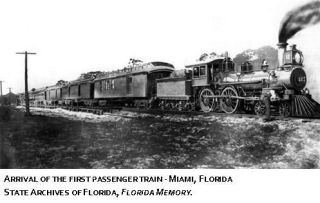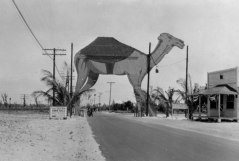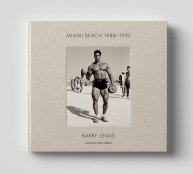
Caroline Papas – Barry Lewis
As you go about your day on Miami South Beach, you could be forgiven for thinking that everyone comes to Miami, but nobody is actually from Miami.
Of course, that is how the City and the Beaches began. South Florida, a little over a century ago, was a crocodile and snake infested mangrove swamp. There were a few intrepid pioneers who began clearing the ground to grow coconuts and oranges, with mixed success, but the process was accelerated when the railway arrived.
The land down the East coast of Florida was being opened up by Henry Flagler, the “Father of Miami” Flagler was an industrialist, who together with J D Rockefeller, began Standard Oil one of the biggest companies in the world at the time. He was also a Railway Magnate and he was driving his East Coast Railway south from the Florida panhandle. The line ended at Palm Beach, just short of the mangrove swamps; where Flagler built the largest Hotel in the world, 540 luxury rooms and 6 stories high. Palm Beach Resort was born and soon expanded into a town and then a city.
world, 540 luxury rooms and 6 stories high. Palm Beach Resort was born and soon expanded into a town and then a city.
Then Henry Flagler was tempted by Julia Tuttle, another pioneering developer, to bring his tracks down to the fledgling Miami in exchange for free land. Workers who were willing to work on the building of Miami and the Beaches were offered free rail travel and housing. Soon resort hotels and family homes were spreading across the defeated swamp land. Flagler just kept getting richer. He was generous with his wealth and he paid for schools and churches to be built.
His railway was soon followed by Carl Fischer, who having made a fortune in automobile headlamps and batteries, attracted Government backing to build the first

South Dixie Highway before it had eight Lanes.
trans-continental brick Highway; US1. He built the South Dixie Highway from Georgia down the coast to Miami. Today US 1 runs from the Canadian border down the 2,489 miles to Key West, Fla.
With an unlimited oil supply and Henry Ford beginning to mass produce the automobile, dirt roads were inhibiting America’s journey into the 20th century.
Although the movies were not invented in America, the Road Movie was. From the early pilgrims to the present today; from the wagon trains to the interstate Highways people have always drifted across the continent in search of a new life; chasing a dream or escaping a nightmare – in search of an opportunity. Wandering is a part of the American spirit.
One of the multitudes of visitors that drifted down to Miami on Carl Fisher’s South Dixie Highway was Caroline Papas. She is just in from Louisiana on the Greyhound. At the age of 51, Caroline has decided to stop a while on South Beach.
“I’ve been living in many places”
Somewhere along the way she had stopped long enough to start a family.
“I had a husband once, from Puerto Rico, but he’s gone now. He gave me eight kids!
So why was she not with them?
“I don’t know where they all are now. Two of them, a boy and a girl, are with me here someplace – I can’t do anything with them”
Caroline glances up and down the street as if they could be in earshot and confides, “They are working the beach. I tell them it’s dangerous. They could get diseases – but they don’t listen to me”
Remembering the camera, she does a slow whirl on the spot – arms outstretched and enquires in a southern drawl, “How do I look? Do you think I could be a model? People say I should”.
Why not?
It’s always worth asking, always worth a shot – you just never know in this land of opportunity.
ooo OOO ooo

Portraits are from the newly published photobook by the Hoxton Minipress, London.
Main picture by Barry Lewis. Click Here to see more of the book.

